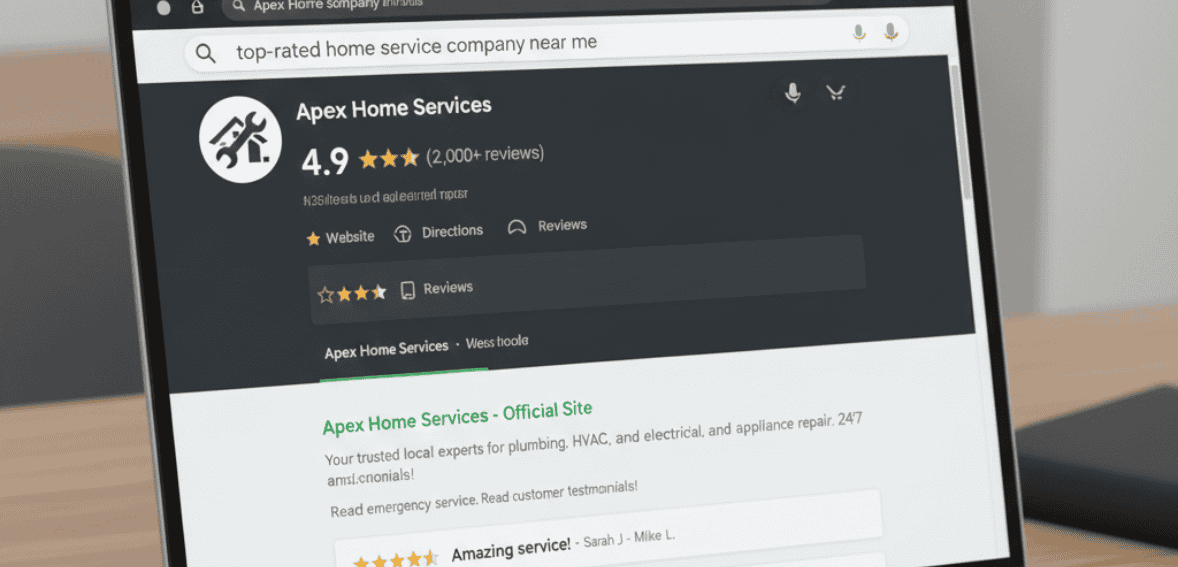
How to Grow Your Home Service Business in 2025: Tips for Scaling & Increasing Profits
Growing a home service business has never been more exciting or challenging. Demand for trades and field services continues to rise, but so do fuel expenses, materials costs, labor shortages, and customer expectations. The companies scaling successfully in 2025 aren’t simply working harder. They are operating smarter using tools, systems, and customer-focused strategies to expand without losing control.
The most significant shift happening right now is toward efficiency-driven growth. Home service businesses whether plumbing, HVAC, pest control, electrical, landscaping, cleaning, or handyman services are recognizing that scaling doesn’t require doubling staff or buying more vehicles. It requires eliminating waste, responding faster, converting more leads, strengthening customer loyalty, and using data to make wise decisions.
Every service job involves multiple moving parts: scheduling, dispatching, communication, inventory, invoicing, payment processing, follow-up, and, hopefully, repeat business. When too much of that is handled manually, the industry hits a ceiling fast. But when those workflows become organized and digital, growth becomes easier because the company can serve more customers without adding stress.
Field service companies across the world are realizing something important: profit doesn’t come from more jobs it comes from managing each job better. Strong businesses scale by tightening processes, not stretching people thin.
This guide breaks down the essential strategies modern service brands use to grow faster, deliver better service, and boost revenue all while keeping operations lean and manageable. It’s not about risky expansion. It’s about smart transformation.
Table of Contents
ToggleOptimize Operations with Technology to Scale Efficiently

Home service companies are moving away from paper forms, whiteboards, and scattered spreadsheets because those tools limit capacity. If scheduling requires phone calls, if invoicing requires chasing payments, or if job history isn’t organized anywhere, the business becomes chaotic as soon as demand increases.
Digital operations are essential for scaling without overwhelming the team, enabling growth through automation and organization.
When jobs are dispatched through digital scheduling, routes are automatically optimized, customers are automatically updated, and technicians have the job details on their phones productivity increases even without adding staff. The company can handle more calls in a day while making fewer mistakes and spending less time coordinating.
For the owner, technology provides visibility. You can finally see:
• Which jobs are profitable
• Which techs are most efficient
• Which leads convert
• Where delays and cost leaks occur
Businesses that adopt digital tools earlier scale faster, stay more profitable, and spend less time fixing errors. By automating what used to take hours of data entry, scheduling reminders, invoicing, and payment collection the company reduces administrative work and frees the team to focus on revenue-driving tasks.
That’s how companies grow without adding unnecessary payroll costs. Technology becomes the new operations assistant that never sleeps, never forgets a job, and never loses paperwork.
Strengthening Customer Experience to Drive Repeat Business

In the home service industry, reputation is the greatest asset. A single customer’s lifetime value is far higher than the profit from one job. A homeowner who trusts your company will use you again for future repairs, installations, seasonal needs, and referrals all at no cost.
What customers remember most is not the technical work but how they were treated:
• Was the company responsive?
• Did the technician arrive on time?
• Did they communicate clearly?
• Was payment easy?
• Did the customer feel respected?
Speed matters more than ever. Studies show that a large percentage of customers abandon a company if no one answers the phone or responds quickly. Even if they found you first, they will call the next provider within minutes.
Fast response is no longer a “nice to have” , it’s a revenue engine. Businesses that respond immediately win the job. Those who delay lose it.
Customers are also seeking confidence. They want updates, technician tracking, and digital receipts. They expect the same convenience they experience in other industries. Providing that level of service builds trust, and trust builds recurring revenue.
Excellent communication creates loyal customers who bring in free referrals and reduce marketing costs. Growth starts with retaining the customers you already have.
Turning More Leads into Confirmed Jobs

Marketing can bring in calls and website form submissions but a lead has no value unless it becomes a booked appointment. That is where many service businesses lose money. Sometimes calls come in outside business hours. Sometimes messages get buried. Sometimes no one follows quickly. And every missed lead means lost revenue.
Scaling requires a speed-to-lead strategy, where the company responds immediately before the customer contacts a competitor. Even a single prompt reply can determine whether you get the job or lose it forever.
Follow-up matters too. If the customer doesn’t book immediately, a structured callback sequence can recover opportunities that would otherwise disappear.
Companies that consistently convert leads have systems to:
• Capture every lead digitally
• Assign follow-ups automatically
• Track conversion performance
• Improve messaging and response speed
Sales in home services isn’t aggressive; it’s about being reliably available. Customers want someone they can trust quickly, not someone who makes them wait or forces them to chase updates.
When lead-to-job conversion improves even slightly, revenue increases without additional marketing spending. That efficiency compounds growth.
Profitable companies build Long-term relationships with maintenance plans and subscriptions, ensuring steady recurring revenue and sustained growth. The most profitable service companies don’t rely only on emergency calls. They build long-term relationships with maintenance plans, annual check-ups, or service subscriptions that guarantee recurring revenue every month or year.
Recurring services accomplish several things:
• They stabilize cash flow
• They reduce slow seasons
• They keep competitors away
• They create ongoing customer touchpoints
• They increase lifetime revenue from each client
For example, HVAC companies that offer annual servicing keep their name top of mind when bigger jobs arise. Electricians offering safety check programs are called first when new renovations happen. Cleaning services that sell monthly packages remove customer hesitation entirely.
Recurring customers are cheaper to serve because there’s no marketing cost to reacquire them. Their trust is already established. They are easier to upsell because they value existing relationships.
Scaling is easier when your business doesn’t have to start from zero every month.
Expanding Reputation and Local Visibility to Capture More Opportunities

Where customers look first online search and reviews determines which companies grow faster. People trust what other locals say more than any marketing slogan. That means growth is directly tied to online presence.
Businesses that consistently collect five-star reviews rise higher in local results, get more calls, and earn customer confidence instantly. Reviews act as your digital word-of-mouth and they influence buying decisions more than pricing or promotions.
Local visibility strategies that fuel growth include:
• Showing up first in “near me” searches
• Displaying real photos of work, trucks, techs, and customers
• Responding to reviews professionally
• Ensuring service areas and offerings are clear online
When the business looks active, trustworthy, and easy to contact, more customers choose it… and competitors lose ground without even realizing why.
Brand trust online leads to real jobs offline. This is one of the highest-ROI growth levers available, especially for smaller companies.
Increasing Profit Per Job with Smarter Job Costing and Pricing Strategy
Growth isn’t only about doing more jobs it’s about making more money from each job. Many service companies unknowingly undercharge, underestimate labor time, or fail to account for operational costs.
Scaling requires accurate data on:
• Average revenue per job
• Labor productivity
• Cost of returns, mistakes, and callbacks
• Travel time inefficiencies
• Inventory waste
Businesses that track costs closely can raise prices confidently or adjust them to maximize profit rather than guessing. Routing improvements alone can reduce fuel and idle time, meaning more revenue per hour worked.
Upselling matters too. Technicians who are trained to suggest relevant add-on services and replacements (without pressure) increase revenue without needing more calls. Customers often appreciate being informed about functional upgrades.
Profit growth comes from working smarter on every job not from stretching the team thin.
Empowering Your Team for Performance and Growth

A home service business can only scale as strongly as the team behind it. Skilled technicians deliver the quality that builds a reputation. Reliable office staff ensure communication stays strong. But growth becomes difficult when employees feel stretched, underappreciated, or stuck without progress.
In 2025, the most successful service companies treat retention as a strategic advantage. Recruiting new technicians is expensive and time-consuming, especially when trade labor shortages are rising. So, investing in the team you already have becomes a major driver of profitability.
That starts with communication and recognition. Technicians want to know how they’re performing, what they’re doing well, and where they can improve. They want training that helps them work faster and feel confident during complex repairs. And they want tools that make their day smooth, not frustrating.
Owners who provide ongoing training, fair workloads, modern equipment, and transparent expectations build technicians who stay longer and take pride in the company’s success. Empowered employees communicate better with customers, upsell more opportunities, and represent the brand like it’s their own.
Growth becomes easier when the people inside the business grow too. A motivated team reduces errors, improves customer satisfaction, and keeps turnover low, which lowers costs and protects the company’s reputation as it expands.
Expanding Service Offerings When the Business Is Ready

Once operations are strong and the team is steady, many home service businesses choose to scale revenue by expanding what they offer but only thoughtfully. Adding new services can be highly profitable, but doing so too quickly can overwhelm the business.
Strategic expansion might look like:
• A plumber offering water treatment installations
• An HVAC company offering smart thermostat upgrades
• An electrician offering EV charger installations
• A landscaper offering seasonal snow removal
• A cleaning company adding commercial contracts
When a company adds new services where it already has experience and equipment, growth happens naturally because existing customers immediately become new buyers.
The key is to test one new offering at a time, ensure the team can deliver it consistently, document workflow, and then scale it as demand grows. Expansion succeeds when it supports the company’s strengths not when it pulls focus into unfamiliar territory.
Choosing home service or FSM software goes beyond basic management tasks. Features like intelligent job scheduling ensure teams arrive promptly and fully prepared, while robust mobile access allows field representatives to stay connected, update job statuses in real time, and access essential information on-site.
Improving Cash Flow to Fuel Growth Faster
Strong cash flow is essential for scaling a home service business. Even profitable companies can stagnate if they wait too long to get paid. Traditionally, invoicing happens after the job, payment is delayed, and paperwork gets lost. That slows growth because owners don’t have enough cash to reinvest in equipment, marketing, or labor.
Digitizing payments removes friction. When invoices are sent immediately from the job site and customers can pay online with one tap, the business gets paid faster often the same day. Faster payments mean healthier cash flow, and healthier cash flow means freedom: freedom to invest, expand, and seize opportunities rather than postpone them.
Cash flow isn’t just about collecting faster it’s also about reducing avoidable costs. Route optimization cuts fuel expenses. Automated reminders cut no-shows. Better job scheduling reduces downtime. These improvements may seem small day to day, but over months and years, they unlock the capacity to scale without financial stress.
Growth is much smoother when the business does not wait for money that has already been earned.
Leveraging Customer Data to Make Smart Growth Decisions
As a company scales, the decisions become bigger: where to market, which services to focus on, which neighborhoods to prioritize, when to hire, and when to expand. Guessing leads to wasted money. But tracking performance leads to clarity.
Customer data reveals patterns:
• Which services are most profitable
• Which zip codes call the most often
• Which technicians have the highest satisfaction ratings
• Which marketing channels actually convert
• Which customers buy repeatedly versus once
That information allows owners to invest smarter. Instead of spending on broad advertising, money goes where demand already exists. Instead of expanding into low-conversion areas, the business grows in neighborhoods with loyal clients. Growth becomes intentional rather than experimental.
Transforming the business into a data-driven operation creates long-term stability because decisions are grounded in evidence instead of assumptions. When you know what works and what wastes time, scaling becomes less risky and predictable.
Cloud or home services systems collect and analyze data from various project aspects. This data-driven approach provides valuable insights into performance, helping contractors identify areas for improvement and make informed decisions about future projects.
Conclusion
The future of home service business growth belongs to companies that embrace change not passively, but strategically. Customers expect fast responses, strong communication, convenient digital experiences, and trustworthy service. Technicians expect the right tools and a clear structure to work. Owners expect profitability and operational control.
Scaling in 2025 is not about adding more trucks to your fleet or doubling your staff. It’s about strengthening core systems so every job is completed better, faster, and with less stress. It’s about converting more leads, retaining more customers, and multiplying revenue efficiently rather than unpredictably.
Growth happens when businesses:
• Run leaner operations
• Make decisions using real data
• Respond quickly to customers
• Increase value from every client
• Invest in their people and equipment
• Build loyalty that lasts for years
Those who prioritize efficiency now will stand out in their markets. They will earn trust faster, scale without chaos, adapt to new demands smoothly, and remain competitive while others struggle to keep up.
The opportunity ahead is enormous and the businesses that move first will lead the industry forward.
Your home service company’s growth doesn’t start with expansion.
It starts with transformation.
FAQs
What’s the most cost-effective way to scale a service business?
The most efficient approach is to improve workflow and reduce manual tasks. Automating scheduling, invoicing, dispatching, and customer communication allows the business to handle more jobs without hiring more administrative staff.
How can I get more home service leads in 2025?
Focus on online visibility and reputation. Most customers search locally and choose highly rated providers. Fast responses, strong reviews, and clear service offerings dramatically increase calls and bookings.
What strategies improve profit in field service work?
Track job costs closely, optimize routes to reduce fuel and travel time, minimize no-shows with reminders, price accurately, and increase revenue by offering upgrades or recurring maintenance plans.
How do I retain skilled technicians as my business grows?
Provide modern tools, reduced stress workflows, ongoing training, performance recognition, and career growth opportunities. Happy technicians perform better and stay longer.
Can digital tools really help a small service company grow?
Yes. When job tracking, payments, and communication become streamlined, owners gain more time to focus on strategy. Faster payments improve cash flow, and fewer mistakes increase profitability making growth easier and more sustainable.
